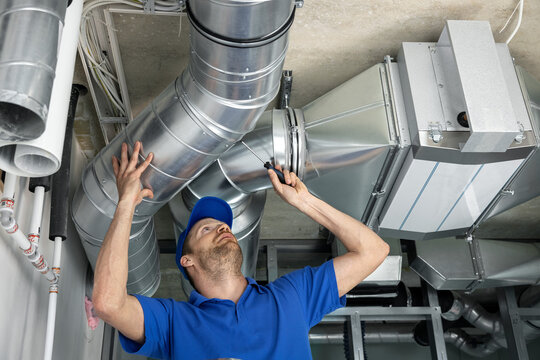Duct flange plays a crucial role in the efficiency and performance of ventilation ducts. It serves as a connecting element, ensuring a secure and leak-free joint between duct sections. Proper selection and installation of duct flange systems significantly enhance the durability and reliability of ventilation systems, making them an indispensable part of modern HVAC solutions.
Understanding Duct Flange Systems
A duct flange is a structural component designed to join sections of ventilation ducts while maintaining airtightness and mechanical strength. It helps prevent air leaks, which can lead to energy loss and reduced system efficiency. Flanges are typically constructed from galvanized steel, aluminum, or stainless steel, depending on the application and environmental conditions.
There are different types of duct flanges, including TDC (Transverse Duct Connector) and TDF (Transverse Duct Flange), which are widely used in commercial and industrial settings. Each type offers distinct advantages in terms of ease of installation, flexibility, and performance. The choice of duct flange depends on the size of the duct, air pressure, and specific ventilation requirements.
Importance of Duct Flange in Ventilation Ducts
The primary function of a duct flange in ventilation ducts is to ensure airtight connections, reducing energy wastage and maintaining air quality. Poorly connected ducts can result in leaks that compromise system performance, leading to increased operational costs and inefficiency. Flanges also provide structural support, helping ducts withstand pressure variations and mechanical stresses.
In addition to sealing efficiency, duct flanges contribute to noise reduction within ventilation ducts. Properly installed flanges help minimize vibrations and rattling, ensuring a quieter and more comfortable indoor environment. This is especially critical in commercial spaces, hospitals, and residential buildings where noise control is essential.
Materials and Manufacturing Standards
Duct flanges are manufactured using high-quality materials to ensure durability and resistance to corrosion. Galvanized steel is a common choice due to its cost-effectiveness and strength. Stainless steel flanges offer superior corrosion resistance, making them ideal for environments with high humidity or exposure to chemicals.
Manufacturing standards such as SMACNA (Sheet Metal and Air Conditioning Contractors' National Association) and ASHRAE (American Society of Heating, Refrigerating, and Air-Conditioning Engineers) dictate the design and performance requirements of duct flange systems. Adhering to these standards ensures that ventilation ducts maintain high efficiency and longevity.
Installation Best Practices
Proper installation of duct flanges is essential to achieving optimal performance in ventilation ducts. The following best practices should be followed to ensure secure and efficient connections:
-
Accurate Measurement: Before installation, duct sections must be measured precisely to align the flange properly.
-
Sealing and Gasketing: Using high-quality sealants and gaskets ensures airtight connections, reducing air leaks and enhancing energy efficiency.
-
Bolting and Fastening: Flanges should be securely bolted or fastened using appropriate hardware to maintain structural integrity.
-
Regular Inspections: Routine checks and maintenance help identify any potential leaks or misalignments, ensuring long-term system efficiency.
Benefits of Using High-Quality Duct Flanges
Investing in high-quality duct flanges offers numerous benefits for ventilation ducts, including:
-
Enhanced Energy Efficiency: Airtight connections minimize energy loss, reducing operational costs.
-
Improved Air Quality: Proper sealing prevents contaminants from entering the duct system, maintaining cleaner indoor air.
-
Increased Durability: High-quality materials and proper installation extend the lifespan of ventilation ducts.
-
Simplified Maintenance: Securely connected ducts are easier to inspect and maintain, reducing downtime and repair costs.
Common Challenges and Solutions
While duct flanges offer significant advantages, certain challenges may arise during installation and operation. Common issues include improper alignment, inadequate sealing, and corrosion. These can be mitigated by:
-
Using Pre-Fabricated Flanges: Pre-manufactured flanges ensure precision and reduce installation errors.
-
Applying Industrial-Grade Sealants: High-quality sealants enhance the durability and effectiveness of duct connections.
-
Choosing Corrosion-Resistant Materials: Stainless steel or coated flanges offer better resistance against environmental factors.
Future Trends in Duct Flange Technology
Advancements in duct flange technology are shaping the future of ventilation ducts. Innovations include smart sealing solutions that use sensor-based monitoring to detect leaks in real time. Additionally, lightweight composite materials are being explored to improve flexibility and ease of installation without compromising strength.
With the increasing emphasis on energy efficiency and sustainability, duct flange designs are evolving to meet the latest industry standards. Prefabricated modular systems are gaining popularity, reducing installation time and labor costs while maintaining high performance.
Conclusion
Duct flange is a critical component in ventilation ducts, ensuring airtight connections, energy efficiency, and structural integrity. Selecting the right flange type, using quality materials, and following best installation practices are essential for maintaining a reliable HVAC system. As technology continues to advance, modern flange designs will further enhance the efficiency and sustainability of ventilation systems, making them a fundamental part of HVAC engineering.






